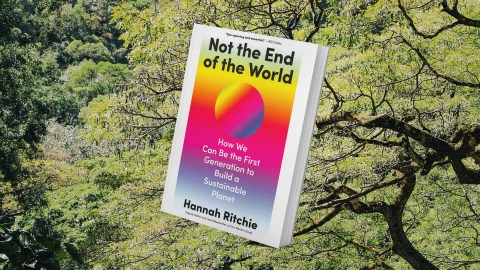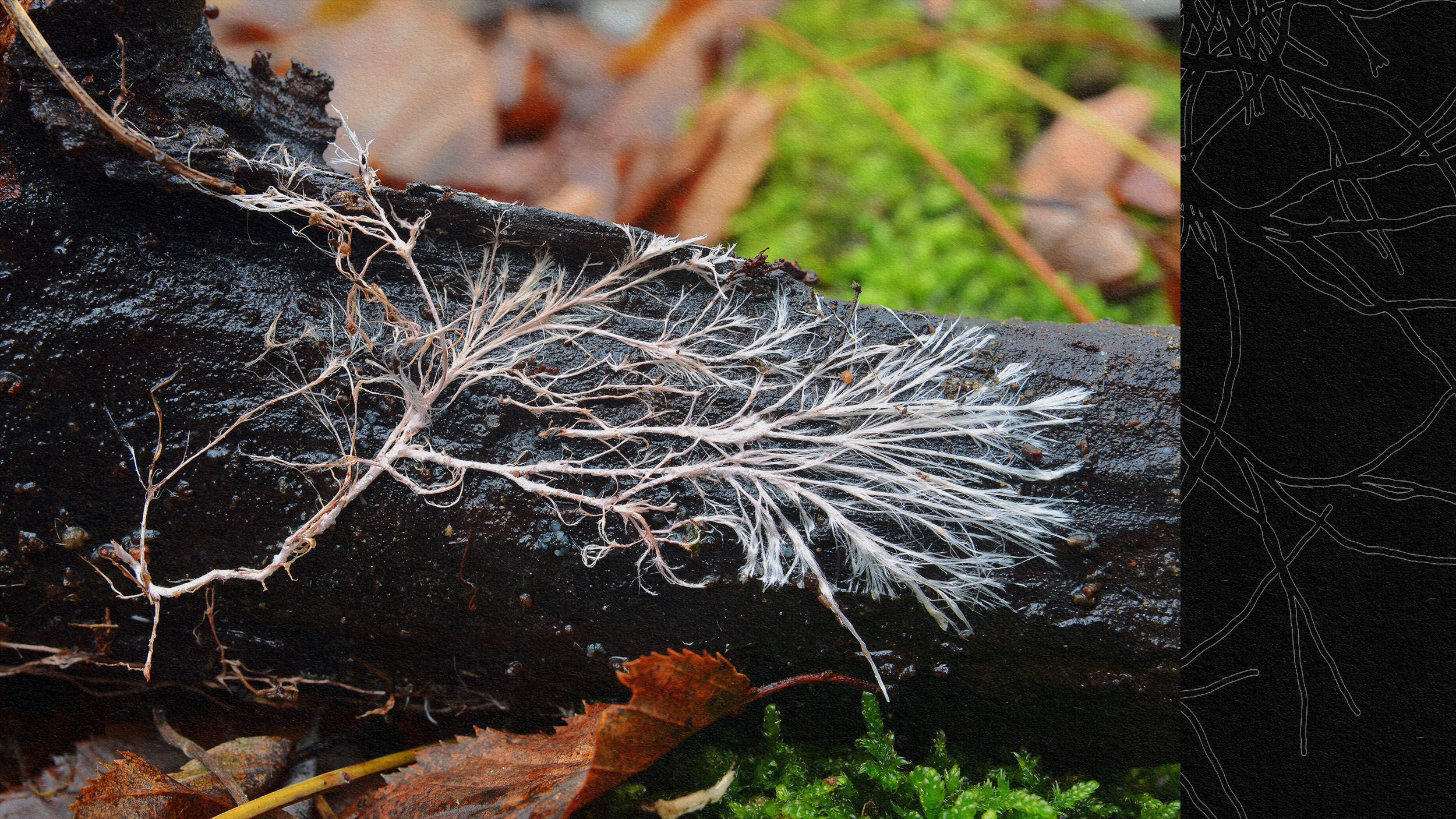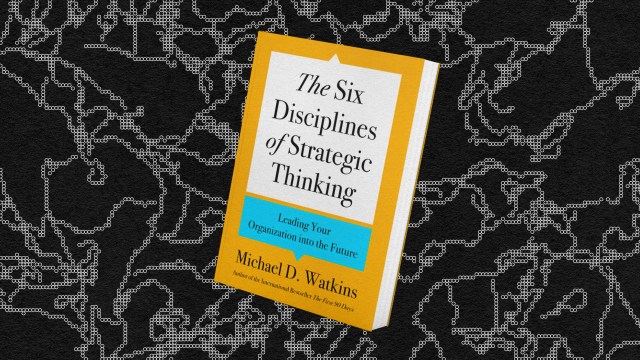Sustainability is humanity’s North Star — and it is within our reach

- Sustainability has two halves — meeting the needs of the current generation and making sure we leave the environment in a much better state than we found it.
- For seven major environmental problems, we’re either at the turning point to a lower impact or have already passed it.
- Interdependencies between these problems mean we can solve a lot in one go.
Sustainability is humanity’s North Star. Make sure current generations have opportunities for a good life, shrink our environmental impact so that future generations have the same (or better) opportunities, and let wildlife flourish alongside us. That’s the dream. And it’s one I believe we can achieve in our lifetimes.
No generation has done this before. ‘Sustainability’ has two halves. Our ancestors were never sustainable because they never achieved the first half – meeting the needs of the current generation. Half of all children died, preventable disease was common and nutrition was often poor.
Over the last century the world has made unprecedented progress in improving living standards across the world. In some places progress has been slower, but every country has improved in health, education, nutrition and other important indicators of well-being. Of course, we’re not done. The world is still terrible in many ways: children and mothers die from preventable diseases, nearly one in ten go hungry, and not every child gets the opportunity to go to school. We’ve got serious work to do. But many of the solutions are at our fingertips – we know what to do, and many countries have done it already. It’s possible to achieve this everywhere over the next few decades if we commit to it.
The second half is making sure we leave the environment in a much better state than we found it. We’ve travelled through seven big problems, looking at where we are, how we got here, and what we need to do next. For every one of them, we’re either at the turning point to a lower impact, or have already passed it.
Air pollution kills millions of people every year, but it doesn’t have to be this way. We know how to get levels of air pollution very low. I am breathing the UK’s cleanest air for centuries, if not millennia. The solution is simple: stop burning stuff. Make sure that people have access to electricity for cooking and heating, stop burning crops and fossil fuels, regulate industrial plants, and focus on clean public transport networks. These changes can be fast: China nearly halved its air pollution in just seven years. Other countries might not be as fast, but a dramatic reduction in air pollution is achievable in the next few decades. This will only get easier as clean energy gets cheaper; poorer countries can skip straight to the good stuff without burning fossil fuels along the way.
Leapfrogging a long fossil-fuel-powered development path will also be essential if we’re to tackle climate change. Rich countries built their wealth on economies run on fossil fuels. It brought countless benefits to human well-being. But it obviously came at a climate cost. Moving forward, we need to make sure that everyone can move through this pathway to prosperity, but on a low-carbon energy source. This option was never there for our ancestors. It was wood, fossil fuels or nothing. That’s not the case today. The price of renewable energy has plummeted, and the same goes for batteries and electric vehicles. Soon the low-carbon pathway will be the cheap one. There used to be a trade-off: burn fossil fuels or stay poor. We’ll be the first generations that don’t have to face this dilemma. Things are already changing and will seem unrecognisable by the middle of the century.
The trade-off for energy was also true for forests. First, for firewood and building materials, then to clear land for agriculture. You either cut down the forest or run out of land to grow food. Crop yields have increased three-, four-, five-fold in the last century, breaking this deadlock. We can grow more food without using more land. Global deforestation peaked in the 1980s, has now also peaked in our most precious forests such as the Amazon, and many emerging economies have committed to ending deforestation by 2030. In the next few decades, deforestation will hit zero if we continue to invest in productive crops and make better decisions on what food to eat. We’ve lost one-third of the world’s forest over the last 10,000 years. This loss is slowing and can be stopped, and then we’ll see more of the world’s forgotten forests return.
We won’t solve climate change, stop deforestation or protect biodiversity without changes to how we eat. Hunger rates have fallen quickly over the last 50 years, but one in 10 people still don’t get enough food to eat. It’s not because we can’t grow enough food. It’s because we feed it to livestock, put it into cars, or in the bin where it gets wasted. That’s good news: it means the power to reshape the food system is in our hands. Technologies are changing the way we make food. We can produce products just like meat, without the environmental impact or the animal slaughter. That would save an incredible amount of resources and help alleviate global malnutrition at the same time. We just need to make these products nutritious, tasty and cheap enough for the global stage. In 50 years, we won’t be using half of the world’s land to grow food, or raising and slaughtering billions of animals every year to feed ourselves. Everyone in the world can be well fed on a planet that isn’t eating itself alive.
Tackling biodiversity loss on its own might seem impossible, but we won’t tackle it in isolation; we’ll get most of the way there by fixing the other problems.
Humans have always been at war with other life on the planet. We were either hunting them or fighting them for space. What’s changed is that wildlife now faces a diverse list of threats: not just hunting but also climate change, deforestation, nutrient pollution from farming, competition with livestock, plastics, ocean acidification and overfishing. It really is ‘death by a thousand cuts’. Tackling biodiversity loss on its own might seem impossible, but we won’t tackle it in isolation; we’ll get most of the way there by fixing the other problems. Do this in the next few decades and we’ll see a great wildlife turnaround. Thousands of years of humans versus other species will end, and both will be able to flourish at the same time.
Plastic pollution is the most tractable problem. That is, stopping plastic leaking into the environment and 1 million tonnes flowing into the ocean every year. Invest in waste-management systems and we could stop this. The biggest barrier is money. Most of the world’s plastic pollution now comes from low- and middle-income countries. Rich countries have a responsibility as manufacturers and trade partners to help other countries make landfills and recycling centres a priority. Work together, and plastic pollution will be solved in the next few decades. If it was higher on the agenda, it’s one problem we could solve in just a fraction of that time.
Our final problem is overfishing. Overfishing is almost inevitable in seas with many fishermen and no way to monitor the health of fish populations below the surface. Knowing how many fish there are, and how this is changing, is essential to knowing how much we can sustainably catch. We weren’t fishing beyond our means when our societies were small, but we’ve become experts in plundering the oceans. However, we are getting a grip on the problem: rates of overfishing have slowed, fish farms allow us to produce more fish with less pressure, and in some regions our iconic species of fish are making a recovery. It only took a decade or two for these species to stage their comeback. We can do it at this pace – or faster – everywhere.
Plastic pollution is the most tractable problem. That is, stopping plastic leaking into the environment and 1 million tonnes flowing into the ocean every year. Invest in waste-management systems and we could stop this.
The problems we’re facing are tightly interconnected. The worry is that this gives us impossible trade-offs; we’ll be forced to prioritise one problem at the expense of another. But it isn’t the case; instead, these interdependencies mean we can solve a lot in one go. Move to renewable or nuclear energy to improve air pollution and climate change; eat less beef to improve climate, deforestation, land use, biodiversity and water pollution. Improve crop yields to benefit the climate and humans.
The other commonality between our environmental problems is that their historical arc is the same. We’ve told ourselves that all of our environmental problems are recent. We believe they’ve been created in the last few decades through an exploding population and greed. In reality, nearly all of them have a long history. Humanity’s environmental impacts date back hundreds of thousands of years. This damage was not deliberate – our ancestors often had no other option. But their actions had consequences for the environment and the species we shared it with.
What these problems also have in common is that progress is happening, and it’s happening quickly. Not as fast as we would like, but, nevertheless, attitudes, investments and attention have shifted dramatically. Sustainable solutions are becoming the cheapest option. People are demanding action from political leaders, who can no longer ignore these calls.
There is a real opportunity to solve all of these problems in the next 50 years. All going well, that should be in my lifetime. I’ll be old but still pushing for change, right to the finish line.





